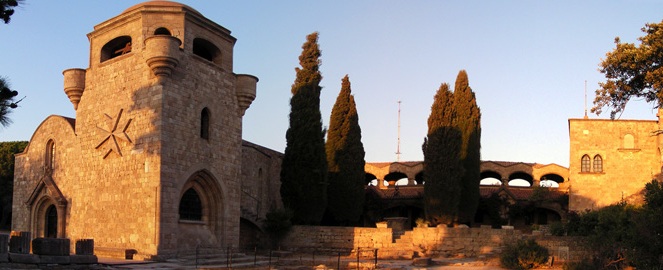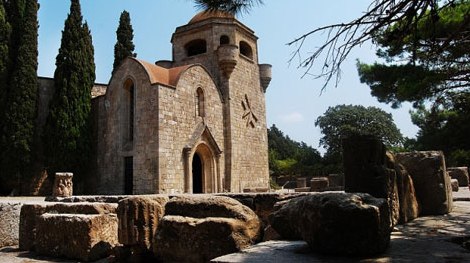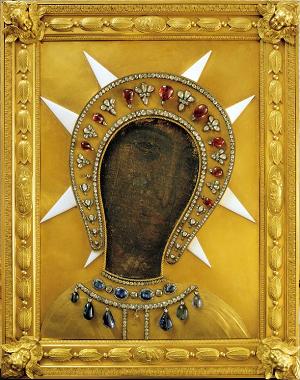
The monastery of Panagia that is dedicated to Zoodochos Pigi (Life-giving Spring) is situated in an idyllic place, at the northwest end of Rhodes, on the hill of Philerimos, at an altitude of 260 metres.
The acropolis of Ialysos and the ancient temple of Athena pre-existed in this place. The latter was converted into a Christian temple in the 5th century AC. Only the baptistery is saved from there. The newer ecclesiastical complex was built by the Knights and was restored in its current form by Italian archaeologists.
“The route of Martyrdom” or “Via Dolorosa” that is situated next to the monastery is something no visitor can ever forget. It is the stoned road underneath the shade of the trees, with the 134 levels which look like steps where Christ’s sufferings are represented with the use of copper engravings and altars on one of its sides. Along the route, you will see many peacocks.

At the end of the route, a gigantic 18m high Cross rises proudly. In the interior of the Cross there is a round staircase which leads to the horizontal part of the Cross where you are offered an exciting, panoramic view of the entire island that is especially magnificent during the sunset.
Inside the monastery there is a stoned, gothic church of Panagia Philerimos and a small underground church of Saint George of Hostos that dates back to the pre knight era (14th -15th century). In this, there are rare frescoes. The Doric fountain is remarkable, a 3,000 years old work that brings water from the top of the hill in a tank carved on the rock.
The monastery is ruled by a committee of the holy metropolis of Rhodes.

The icon in Panagia Philerimos church is a copy of the admirable historic icon that is found in Montenegro today.
It is one of the most important heirlooms of Christianity in the East and the West. Its story appears to start in the 11th century AC, probably from Jerusalem. It was brought to Rhodes by the members of the battalion of Saint Ioannis and later it acquired its name “Philerimos” from the hill Philerimos where it was hosted. According to others, the icon had already been found on the island and its residents had already regarded the icon as their protector.
In 1480 AC, during the first Ottoman siege, the icon was transferred temporarily to the city of Rhodes and it was carried in litanies that took place at the bastions in order to encourage the army. In 1523 AC, the icon of Virgin Mary of Philerimos left the island forever in order to begin its great route through time and history. It travelled to Italy, France and to the island of Malta where it had great influence and protected it especially during the great siege of the island by the Ottomans in 1565 AC. When Napoleon occupied Malta in 1798 AC, robbers attacked the palaces and the churches and they also removed the icon’s cover. The icon travelled to Russia, where it was welcomed with honours together with two other precious items, the hand of Saint John the Baptist and a piece of the Holy Cross by Czar Paul I.
A new golden cover was placed on the icon. It stayed in Russia till the Revolution of October 1917 AC. Then, it was hidden in Petersburg and transferred to Copenhagen, then to Berlin and finally to the palace of the royal family in Belgrade. In 1941, it was transferred to the Ostrong monastery and then it was under the protection of the government of Montenegro. Today, it is kept in the National Museum of the country.
Telephone number: (+30) 22410-92201





